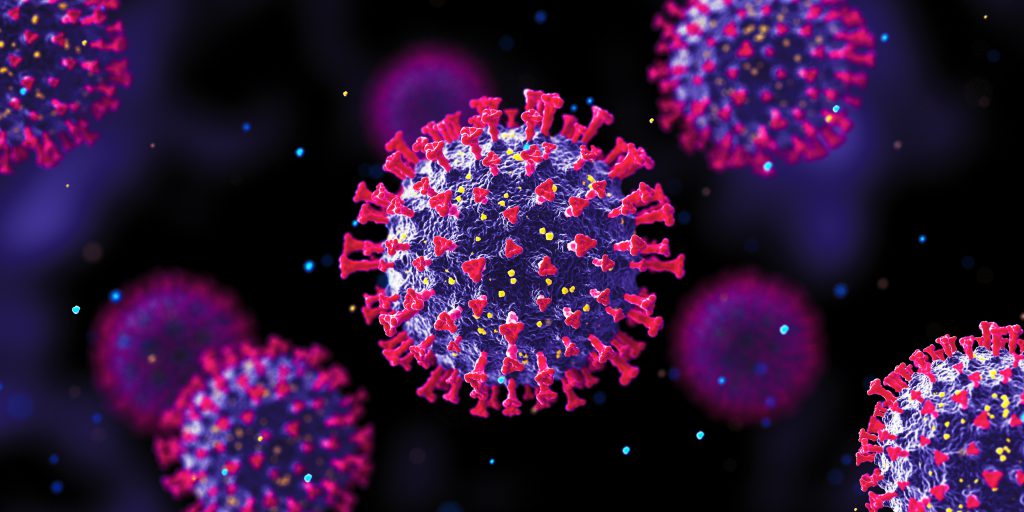10 selected Research Luxembourg results – October 2023
06 November 2023

Luxembourg News in Science & Research
A Nautilus breaking records; a book on the mechanics of poverty; technology serving the performing arts; a new approach to the Bayesian model: here are the latest scientific news from Luxembourg.
Iván Herrador for science.lu; Diane Bertel; Nightcafé; Michel Royon (Wikimedia Commons)
Rumelange is the birthplace of one of the world’s largest Nautilus fossils.
National Museum of Natural History (MNHN)
A significant paleontological discovery has been made in Rumelange: one of the largest specimens of Middle Jurassic nautiluses was recently found.
The fossil was part of a private collection, stumbled upon by a collector within the Rumelange quarry. Acquired by the MNHN later, researchers from the museum have compared the discovery to 18 other nautilus specimens. Measurements, as well as data found in the literature, suggest that Cenoceras Rumelangense, with its 610mm diameter, is one of the largest post-Triassic nautiluses. Nautiluses are cephalopod mollusks (cephalo = head, -pode = foot) that live in the sea, sometimes at depths of several hundred meters. Their unique feature is their unchanged anatomy for millions of years. Their large coiled shells provide excellent support for other aquatic organisms, such as oysters.
Middle Jurassic sediments are exposed along the Franco-Luxembourgish border in the southern part of the country, leading to several interesting discoveries.
A fresh perspective on a renowned model: Bayesian statistics
Faculty of Science, Technology and Medicine (FSTM), University of Luxembourg
While most of us have only a vague idea of what Bayesian statistics are, a recent application has nevertheless influenced all of our lives: pandemic modeling. Professor Yannick Baraud from the Department of Mathematics at the University of Luxembourg now proposes a modified version of the famous Bayesian model.
The Bayesian model is a mathematical tool that addresses statistical problems. Widely used, especially since the advent of high-performance computers, it still has some pitfalls: the presence of outliers in the dataset can make the model unstable, and it remains a simplification of reality. However, Professor Baraud demonstrates that his new approach remains stable even in the presence of noisy data.
Such a publication could have significant repercussions when considering the many practical applications of Bayesian statistics (medical diagnosis, meteorology, the impact of human activities on the environment, etc.).
To the press release / To the publication
How to break free from the cycle of poverty?
Luxembourg Institute of Socio-Economic Research (LISER)
In a new book titled The Escape from Poverty, LISER examines the vicious cycles that perpetuate poverty from one generation to the next. The book highlights key factors hindering change, such as governments failing to invest in childhood or perpetuating misconceptions, like placing the entire responsibility for poverty on dysfunctional families.
The authors’ work goes beyond these issues to propose concrete solutions. Some of the avenues discussed include increasing resources for poverty alleviation, strengthening social protection, ensuring a basic income, and guaranteeing children access to food, childcare, education, and healthcare. The aim is to promote a “regenerative and inclusive economy” to free future generations from the burden of poverty.
To the press release / To the publication
SOniCS: an Innovative Surgical Tool
Faculty of Science, Technology and Medicine (FSTM), University of Luxembourg
Engineers from the University of Luxembourg and the French Institute for Research in Computer Science and Automation (INRIA) have developed an innovative tool after 17 years of research to create surgical training simulations.
Surgical simulations enable practitioners to train safely, and they are particularly valuable in the field of robotics. SOniCS is a plugin that allows users to experiment with various models easily and quickly without requiring in-depth expertise. Models can be modified with just a single line of code, providing great flexibility. The tool combines virtual reality, augmented reality, and real-time simulation.
The next step is to integrate patient-specific data acquired in real-time to update the model. Such an approach would further enhance the accuracy of SOniCS by considering the unique biomechanical characteristics of each patient.
To the press release / To the publication
LIST is revolutionizing the performing arts
Luxembourg Institute of Science and Technology (LIST)
Soon, super wagons will dramatically change the stage designs in Luxembourg, thanks to a new four-year collaboration between LIST and Waagner and Biro Stage Systems. These innovative, connected, and autonomous wagons combine various cutting-edge technologies, including mechanics, electronics (motion sensors, among others), drive systems, locking and positioning systems (essential for safety), and communication. They were developed by no less than 5 teams from the IT for Innovative Services department at LIST.
Their compact size allows them to move into any desired position and combine to create large stage configurations. The project also includes user interfaces enhanced by augmented reality and virtual reality, as well as energy optimization for sustainability.
LIST hopes to profoundly transform the world of theater and performing arts, putting its expertise at the service of art. A beautiful project indeed!

Iván Herrador for science.lu; Diane Bertel; Nightcafé; Michel Royon (Wikimedia Commons)
Are young Luxembourgers suffering from loneliness?
It seems so: according to a recent study by the University of Luxembourg, one-third of young girls aged 11 to 15 in the Grand Duchy would feel lonely.
This finding comes from the analysis of data from the major European survey “Health Behaviour in School-aged Children.” In addition to the decline in mental health between 2018 and 2022 (the years during which the data was collected), this study highlights a significant issue, which is gender disparities in mental health. In comparison, only 1 in 7 boys would have felt lonely in the year 2022. Life satisfaction, mental well-being, and self-rated health are also higher among boys.
The report on the mental health and well-being of adolescents includes data from 280,000 young people in 44 countries in Europe, Central Asia, and Canada (Luxembourg being one of the 15 countries with the most stable mental health).
To the press release / To the publication
What do we know about social inequalities in Luxembourg?
On the occasion of the International Day for the Eradication of Poverty on October 17, STATEC has delved into the country’s social cohesion in a new, comprehensive publication.
In 2022, 17.4% of the population in Luxembourg (including 12.9% of workers) were at risk of poverty. This risk was more pronounced among single young people, foreigners, individuals with a low level of education, the unemployed, and single-parent families. Over half of the working population at risk of poverty was employed in four specific sectors: construction, hospitality and food services, healthcare, and retail.
Massively emerged during the pandemic (52% in 2021, compared to 20% in 2019), teleworking seems to persist in businesses. In the second quarter of 2023, it concerned 32% of residents, creating an additional divide between different professions: in contrast to qualified white-collar workers (with 57% of managers and intellectual professions), only 1 to 3% of blue-collar workers used it, which is not surprising.
To the press release
Towards a more holistic approach to cardiovascular diseases
Luxembourg Institute of Health (LIH)
In a recent publication, researchers from the LIH advocate for a holistic approach to atherosclerosis (the fatty plaques that form on the walls of blood vessels, potentially leading to blockages). They aim to unravel the complex pathological mechanisms of the disease and provide recommendations for potential therapeutic avenues.
Their approach, known as “multi-omic” (referring to the suffix), involves the analysis of multiple biological entities: genes (genomic), RNA (transcriptomic), proteins (proteomic), and metabolites (metabolomic). In clinical practice, cardiovascular diseases, including atherosclerosis, are screened and treated using risk scores that encompass a limited number of factors. The multiomic approach holds the promise of much greater precision, but its high cost currently limits its widespread implementation.
This publication is particularly noteworthy considering that atherosclerosis significantly contributes to premature mortality and reduced quality of life worldwide.
To the press release / To the publication
Do Luxembourgers have confidence in their democracy?
The STATEC has published the results of a survey conducted in 2022 on trust in institutions (Luxembourgish and international). 60% of respondents say they have confidence in the government, 66% in the judicial system, 70% in the police, and 69% in the STATEC. However, the media only enjoys a limited level of trust.
In-depth analysis of the data shows that a high level of education is associated with a high level of trust. Individuals who identify as left-leaning on the political spectrum tend to have more trust in public officials and less trust in financial institutions. Unemployed individuals or those of Luxembourgish nationality are less likely to trust institutions. Men have more trust than women in international institutions and the financial system.
Another interesting aspect is trust in neighbors, which stands at around 57% in Luxembourg, surpassing other European countries.
To the press release / To the publication
Are Luxembourgish seniors active?
Luxembourg Institute of Socio-Economic Research (LISER)
Luxembourgish seniors are in better shape than one might think: more than half of residents aged 50 and above in Luxembourg engage in vigorous physical activity at least once a week. This physical activity includes walking, cycling, active leisure activities, as well as work and household tasks that require physical effort. Between 2015 and 2020, women have caught up to reach 54% physical activity, which is almost the same percentage as their male counterparts (56%).
These results were obtained by LISER and are drawn from the European SHARE survey in which Luxembourg participates. According to the World Health Organization (WHO), sedentary behavior is considered the fourth leading cause of premature deaths worldwide.
Author: Diane Bertel








